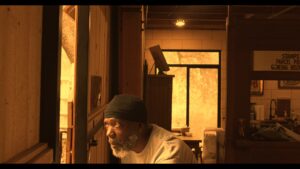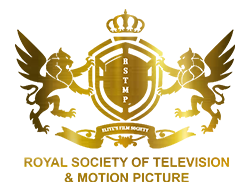
Come Outside | Narrative Feature – Review
Directed by Sheldon Woodson | Reviewed by Sabarno Sinha
As this piece of writing is a review of the film, I find it unnecessary to summarise the whole story which both the audience and the cast and crew of the film need not be told. Hence, I will directly jump to the aspects of the film which I deem fit to be discussed in this film.
I think that Sheldon Woodson is a natural actor. He is gifted with a very expressive face which helps us understand his motives and emotions very easily. Due to the stellar quality of acting that Woodson has displayed in this film which reminds me much of the style of Marlon Brando and Robert De Niro, the other actors in the film, despite having given good performances themselves, seem to appear slightly plain and pale in his comparison. Often, when we critique a film, we uses the Arnoldian Touchstone method without realising it ourselves. We compare the performances of all actors with one particular actor who has, from the very beginning of the film, impressed us very much. Many might take issue with this practice but I think that in an independent film like this, all actors must know what to learn and who to learn from, if they are going to work as a team together for future projects.
While learning about auteur theory, we come to know how each director has a signature style in their film which is often a conglomeration of many elements. Woodson, also, much like Truffaut and Godard, has established his own style but in a very different way. He has done it most visibly through a very marked style of cinematography in which the subjects are kept on the sides of the frame and not the centre. While many might criticise this for seeming odd, I believe that this is a mark of pure genius. The way Woodson has elevated one of the basic practices of classical Hollywood, i.e., the shot-reverse-shot technique, by the use of spaces in between two shots in which the dialogues of the other character are audible is also something which shows that Woodson has not entered the space simply to imitate but would rather be a pioneer. One of the greatest advantages of this practice of showing us the hearer’s face instead of the speaker (at certain moments) is that we are better able to understand their reaction and this, indeed, gives us a comprehensive account of their personality, thoughts and motives.
If I were to talk about what things could be improved upon in the film, my foremost and chief complaint would definitely be the sound mixing of the film. Sound mixing does not just mean adding all the required sounds which have been planned and created, diegetic and non-diegetic, dialogic and non-dialogic but a good sound mixing aims at providing all the sounds to the listener at the right volume  and level. Unfortunately, this could not be carried out consistently throughout the film, as per my observation. In certain scenes, the environmental sounds or sound effects have been so loud that the dialogues of the film could not be heard clearly. While doing sound mixing, it is very important to export rough cuts and screen them on TVs and laptops, at the very least, so as to ensure that the volume of sound that is heard after mixing in the software is maintained when the same is being projected on the screen. To be saying that this is a rookie mistake would be inaccurate on my part as I clearly remember something similar happening with Christopher Nolan’s 2020 film Tenet. Background score had been mixed in such a manner that people were unable to hear the dialogues in many scenes.
and level. Unfortunately, this could not be carried out consistently throughout the film, as per my observation. In certain scenes, the environmental sounds or sound effects have been so loud that the dialogues of the film could not be heard clearly. While doing sound mixing, it is very important to export rough cuts and screen them on TVs and laptops, at the very least, so as to ensure that the volume of sound that is heard after mixing in the software is maintained when the same is being projected on the screen. To be saying that this is a rookie mistake would be inaccurate on my part as I clearly remember something similar happening with Christopher Nolan’s 2020 film Tenet. Background score had been mixed in such a manner that people were unable to hear the dialogues in many scenes.
Other than this, some of the most important generic elements of the ‘science-fiction’ are the concept and the cinematography. Of the former, I only wish to say that even though it seemingly stems from a simple idea, which might remind today’s generation of the advice that their parents give them constantly, i.e., “Come Outside”. This has been developed very thoroughly in the film to its climactic point. Of the latter, I have said much before but there is one other thing that I would like to add: the constant interplay between warm and cold tones. Not many would advocate this kind of colour grading but a film such as this demands this as a part of its story and worldbuilding. The execution of this has been done very smoothly and I am impressed. The science-fiction genre in Hollywood is filled with spectacle, gimmicks and no story and when we study literary theory, one of the first philosopher who we study, Aristotle, had very clearly written in his Poetics that a drama (we can apply this to film) which relies entirely on spectacle is much inferior to that which develops its plot thoroughly. These kinds of plays and films are the one which leave a mark on us, and I am quite fortunate and glad to say that Woodson’s Come Outside is one such film.


